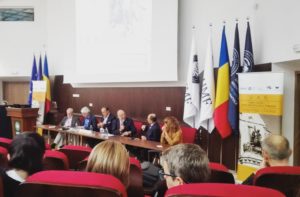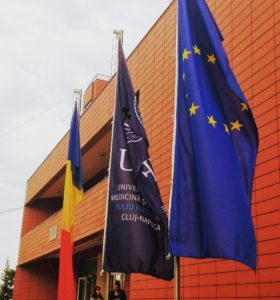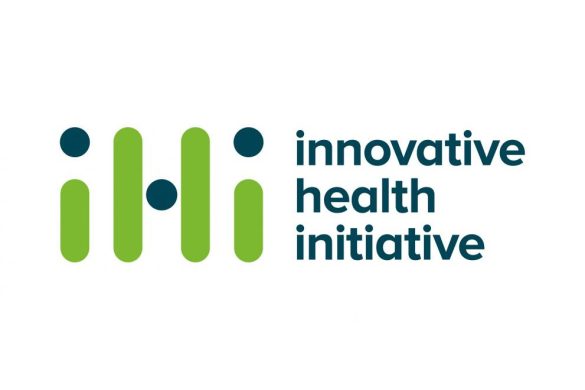It is a pleasure to share with the European neurological community the outcome of the first teaching course for rare neurological diseases. The course took place in Cluj-Napoca, Romania, from 7th to 9th September 2017.
The course was attended by more than 50 attendants, mostly neurologists, residents and academic/researchers from all Europe. Prof. Antonio Federico, chair of the EAN Scientific Committee and chair of the EAN Rare Neurological Diseases (RND) Task Force, opened the course explaining how to deal with the Pandora box of rare neurological disorders. The list of the RND encloses more than 5,000 disorders. Of note, half of them are in the neurology field, involving muscles, central and/or peripheral nervous system. Prof. Federico explained that the EAN Scientific Committee has organized a Task Force, which involves members from all different Panels, a delegate from the patient associations and a young neurologist from each Panels. This is essential to share information on this topic and to stimulate interactions between different groups in Europe. Dr. Holm Graessner, Executive Director of the Rare Disease Centre at the University Hospital of Tubingen, member of the EAN Rare Disease Task Force, presented the European Reference Networks (ERNs). ERNs has been created to join the efforts of several specialists to tackle rare medical conditions. Indeed, this group of diseases requires highly specialized healthcare.

The lectures of Prof. Jean-Marc Burgunder – Medical Director of the Siloah Neurocenter, Chair of the EHDN Executive Committee, Co-Chair of the Specialist Scientists Panel on Neurogenetics of the EAN – touched practical aspects on the complexity of rare neurologic diseases presenting with movement disorders, in particular ataxia, spastic paraparesis and Huntington’s disease. He showed the difficulties of the differential diagnosis from common diseases and an early evaluation is needed specifically with the aim to recognize rare disorders, which may be treated in order to avoid later complications. He emphasized the importance to closely follow-up the patient in the course of the disorder in order to address specific problems. During the afternoon session an excellent talk about late onset neurometabolic diseases was given by Prof. Federico. He illustrated that, beside the well known infantile-and juvenile-onset diseases, an increasing number of cases with a slowly progressive disease and adult onset have been described. He described clinical signs, diagnostic work-up and possible therapeutic strategies of many diseases whose an enzyme defect or metabolic substances accumulating in the tissues or in biological fluids have been identified. The emergency need of guidelines for rare diseases was main topic of Prof. Leone’s talk, Director of the Neurology Unit at the Clinical Research Institute IRCCS “Casa Sollievo della Sofferenza”, Chair of the EAN panel Neurotoxicology, member of the Scientific Committee as well as of the guideline production group. He pointed out the difficulties to create them because they are clearly affected by the lack of evidence from randomized clinical trials. Despite these adversities, he wished EAN considers the production of neurological guidelines in rare diseases as a primary tool to spread knowledge in European Neurology. The lecture of Prof. Anna Czlonkowska, member of Polish Academy of Arts and Sciences, American Neurological Association, German Society of Neurology, was dedicated to Wilson’s disease, dealing with the wide process from the diagnosis to the management.
The second day started with Maria Judit Molnar, Professor at Semmelweis University’s Institute of genomic medicine and rare disorders. Her lecture was dedicated to informatics supports and data banks for diagnosis of rare neurologic diseases. She disclosed the importance of the artificial intelligence. We currently know 8,000 rare human diseases ad about 60-70% of them is related to nervous system. Antonio Toscano, Professor of Neurology at the Deparment of Clinical ad Experimental Medicine of the University of Messina, responsible of ERN Reference Center for Rare Neuromuscolar disorders, gave a brilliant talk about rare neurological disorders presenting with myopathy, highlighting the new therapeutic approaches. Subsequently, he presented the importance of skin, muscle and nerves biopsies in order to identify and diagnose rare diseases. The lecture of Dafin F. Mureseanu, Chairman at the Department of Clinical Neurosciences of the University of Cluj-Napoca, was about rare causes of stroke (aortic arch atheroma, cervical dissection, PFO and ASA, hereditary conditions, thrombophilia, acquired hypercoagulable status and vasculitis). Prof. Albert Ludolph from Department of Neurology of the University of Ulm, gave an impressive talk about the formal pathogenesis of amyotrophic lateral sclerosis. The second day was concluded by Prof. Jean-Marc Burgunder, who was focused on the perspective on treatment of these diseases. He emphasized the importance of providing appropriate information to patients, including limitations in therapeutic options.
On the third day, Dr. Alessandra Rufa, Neurologist and Neurophtalmologist at the Neurometabolic Unit of the University of Siena, discussed about the essential role of eye movement examination to detect a neurometabolic disease. Prof. Ovidiu Bajenaru, from the University od Medicine and Pharmacy of Bucarest, talked about tuberous sclerosis complex. He pointed out a new therapeutic approach based on mTOR inhibition, associated with classical therapeutic algorithm. This could be seen as an example of disease modifying therapy and a potential antiepileptogenic approach. The last but not less interesting lecture was given by Dr. Johann Sellner from the Paracelsus Medical University of Graz. He described the clinical manifestations, neuroimaging findings and challenging therapeutic approaches for spinal cord infarction.
 The Task Force for RND ended with a round table talk that encouraged the improvement of Neurological Units in Europe dedicated to these disorders, the appropriate education of neurologists in the care of rare neurological disorders and the integration with patients’ associations.
The Task Force for RND ended with a round table talk that encouraged the improvement of Neurological Units in Europe dedicated to these disorders, the appropriate education of neurologists in the care of rare neurological disorders and the integration with patients’ associations.
This first teaching course for RDS was a success and a huge opportunity to meet colleagues, share ideas, research findings and experiences. With the hope of a second edition, I would thank again all the people who have worked for the perfect realization of this teaching course – Task Force for Rare Neurological Diseases.
by Monica Margoni, MD, University of Padua, Italy















